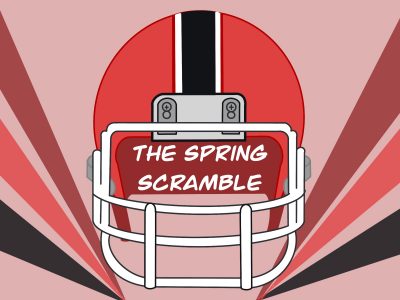Three-point conversions. Fourth down onside kicks. Overtime shootouts.
In an effort to differentiate itself from other leagues, the United States Football League released its rulebook last week with a number of different on-field changes for the upcoming inaugural season. The rulebook, for the most part, lines up with the NFL, while adding twists to common rules and adding more opportunities to keep the game exciting. Along with some original rules, other ideas were pulled from the NCAA, XFL and AAF.

These changes are crucial to the league’s success because the creativity of the rules and the competitiveness of the games are necessary to draw in viewers and fans. Similarly, the league can serve as a testing site for rules that may eventually be adopted by the NFL. This previously occurred during the 1983 iteration of the USFL where the two-point conversion and the modern replay system were both picked up by the NFL.
Mike Pereira, who is known as FOX Sports’ rules analyst during the NFL season, will serve as the head of officiating for the USFL. Here are the most exciting and important rule changes to look out for when the USFL kicks off on April 16.
Extra points
The first major rule change has to do with possibilities for PATs. A touchdown is worth six points, but teams can elect to try to make it into a seven, eight or ninepoint play. Similar to the NFL, the scoring team can kick a field goal from the 15-yard line for one extra point or try to get into the endzone from the two-yard line and score two extra points. The twist comes with the novel potential for three extra points, where a team can run a “scrimmage play” from the 10-yard line. This is adapted from the XFL and is certain to make games more competitive. For example, an 18-point difference between two teams would still only be a two-possession game. This also adds another layer of strategy to coaches and how they plan around the point-after-attempt.
Onside kicks
Another rule designed to keep the game competitive is the new onside kick option, which was adapted from the AAF. If a team decides to attempt an onside kick, they have two options — kick a traditional onside kick from the 25-yard line or run a 4th-and-12 play from their own 33-yard line. If the team is successful on the 4th-and-12, they continue their drive; however, if they fail, the opposing team gets the ball wherever they down the ball. This makes onside kicks much easier to achieve as it shifts the pressure towards the team’s defense and away from a lucky bounce. Crucial to this rule’s success is maintaining a low success rate so that teams do not abuse the rule to get the ball back.
Overtime
The NFL’s overtime has been under a lot of recent scrutiny due to its reliance on the coin flip, and just Tuesday the league changed the rules to allow each team to possess the ball at least once in an overtime period during playoff games. The USFL attempts to address this issue by guaranteeing that each team has a chance to score in a best-of-three style shootout. Each team will have three chances to score from the two-yard line and whoever has the most successful attempts wins. If there is a tie, the shootout continues in sudden death fashion. This is an adaptation from the XFL and is reminiscent of the recent NCAA overtime rule change. While this puts a unique twist on overtime, it risks straying too far from traditional football and leaves fans with much to be desired.
Two forward passes
A new dynamic addition to the rule books allows for offenses to attempt two forward passes behind the line of scrimmage. This is pulled from the XFL, where it was underutilized. If used correctly, this is a really exciting rule change that could produce creative playbooks, more dangerous offenses and new defensive strategies to protect against it.
Defensive pass interference
It seems every league has its own take on defensive pass interference and the USFL is no different. The penalty is a spot foul if it occurs within 15 yards of the line-of-scrimmage; however, it is a 15-yard penalty if it occurs beyond those boundaries. Another addition is that if a player “intentionally” tackles a player beyond 15 yards, it will be a spot penalty. This rule cuts down on the NFL strategy of throwing deep and hoping for a spot DPI, but also cuts down on the NCAA strategy of intentionally getting a DPI to avoid giving up more yards.
Offensive pass interference
There is only a minor tweak to the offensive pass interference rule in that an OPI can not be called if the throw does not cross the line of scrimmage. Similarly, there is no ineligible player downfield penalty if the ball does not cross the line of scrimmage. These two rules are to limit penalties on actions unrelated to the play.
Instant replay
Instant replay is another minor tweak from the NFL in which coaches will only have one challenge, which will be sent to the FOX Sports Control Center in Los Angeles. The control center will be the sole governing body on challenges in order to keep rulings consistent. They will have the power to overturn personal foul calls and the previously mentioned intentional tackling on DPIs.
Kickoffs
Kickoffs will be sent from the 25-yard line with no member of the kicking team lining up behind the one-yard line and the receiving team required to have at least eight players between the 35- and 45-yard line.
Clock
Finally, the rules of the clock will remain mostly the same as the NFL, except within the final two minutes of a half. The clock in USFL games will stop every time a team gains a first down inside two minutes of the second and fourth quarters. This should add more plays and, therefore, more excitement to the end of games.




